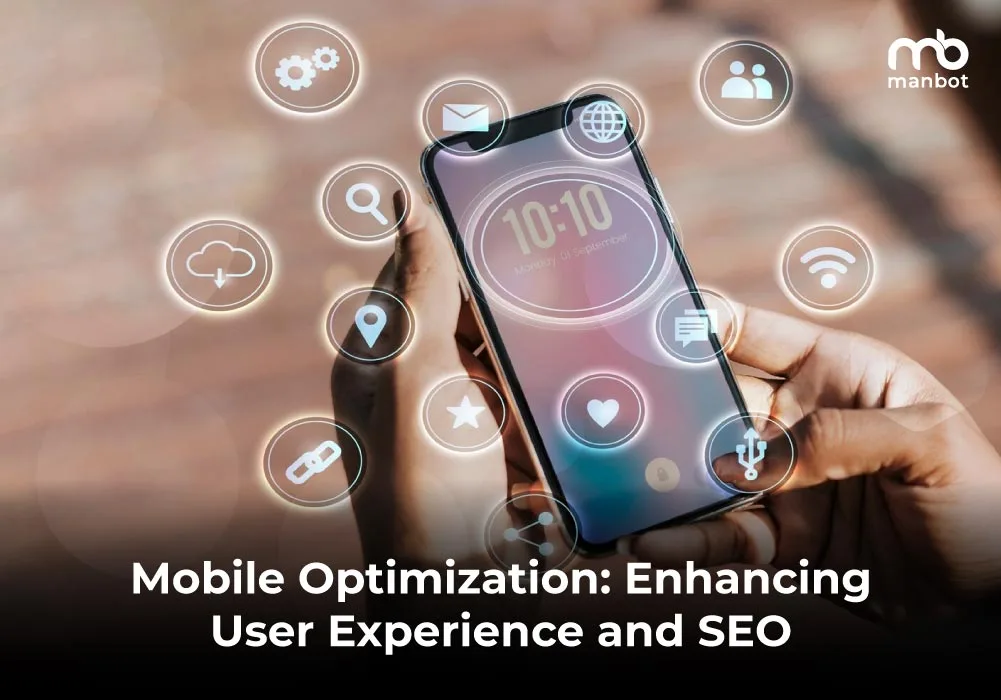Dominate Search Results with Next-Level Mobile Optimization Techniques
Dominate Search Results with Next-Level Mobile Optimization Techniques
Blog Article

The Ultimate Guide to Mobile Optimization: Strategies for Enhancing Internet Site Performance on Smartphones and Tablets
The approaches for improving internet site performance on mobile platforms go beyond simple adaptation; they encompass an extensive method that involves receptive design, speed optimization, content approaches, and user experience enhancements. By delving right into the details of mobile optimization, services can not only fulfill individual expectations but also remain in advance in an affordable digital landscape.
Value of Mobile Optimization
Mobile optimization plays a critical function in enhancing individual experience and driving conversion prices in the ever-evolving electronic landscape. With the enhancing usage of smart devices and tablets for surfing the net, ensuring that web sites are maximized for smart phones has actually ended up being imperative for organizations - Mobile Optimization. A mobile-optimized site not just adapts flawlessly to different display dimensions but additionally loads quickly, supplying individuals with a smooth and satisfying surfing experience
In today's fast-paced world, customers expect instant access to information on the move. A web site that is not enhanced for smart phones risks losing possible customers because of reduce filling times or a poor interface. By spending in mobile optimization, services can deal with the requirements of their mobile audience, leading to greater engagement and boosted conversions.
Furthermore, search engines like Google prioritize mobile-friendly web sites in their positions, making mobile optimization important for enhancing presence and bring in organic traffic. Mobile Optimization. Generally, the value of mobile optimization can not be overstated, as it directly impacts user satisfaction, conversion prices, and general business success in the digital realm
Responsive Design Methods
Applying receptive layout techniques ensures that web sites dynamically adjust their format and content based upon the user's gadget screen dimension, offering a constant individual experience across numerous platforms. Among one of the most typical approaches utilized in receptive layout is producing fluid grids that permit web content to resize proportionally to the screen dimension. This makes certain that elements on the website keep their relative spacing and arrangement, maximizing the checking out experience for users on various devices.
In addition, making use of versatile pictures that can scale with the size of the viewport helps stop images from being cropped or distorted on smaller screens. CSS media questions play an essential role in receptive design by allowing designers to apply details designs based on the device features such as screen width, height, and orientation. By leveraging media inquiries, sites can adjust their design and layout to fit smartphones, tablet computers, and desktop computer displays seamlessly.
Integrating responsive style techniques not just enhances customer experience yet likewise adds to improved online search engine positions, as search engines you can check here like Google prioritize mobile-friendly internet sites in their mobile search outcomes. By embracing responsive layout, sites can accommodate the diverse requirements of customers accessing content on a range of devices, ultimately driving engagement and conversions.
Speed and Efficiency Optimization

One key strategy is maximizing photos and multimedia content to lower documents sizes without endangering high quality. Pressing images, leveraging contemporary picture layouts like WebP, and lazy packing offscreen pictures work approaches to accelerate load times (Mobile Optimization). Furthermore, lessening HTTP requests, leveraging web browser caching, and reducing server feedback times are important action in improving efficiency.
Executing a content delivery network (CDN) can also considerably improve website rate by distributing material throughout several web servers globally, lowering latency for individuals accessing the site from various areas. Focusing on critical above-the-fold content and deferring non-essential scripts can further enhance perceived efficiency. By concentrating on speed and efficiency optimization, websites can supply a smooth and satisfying customer experience on smart phones.
Mobile-Friendly Material Approaches
Mobile-friendly material methods involve customizing the discussion of details to suit the smaller screens and on-the-go nature of mobile phone and tablet computer users. In addition, breaking up material into shorter paragraphs and making use of bullet factors can help improve readability and make it less complicated for customers to take in details rapidly.
Integrating engaging visuals, such as images and videos optimized for mobile viewing, can likewise improve the total individual experience. These visuals should be appropriate, high-quality, and lots swiftly to avoid customers from losing interest. Incorporating More Info interactive components like tests, surveys, or studies can enhance user engagement and urge energetic engagement.
Customer Experience Enhancements
Structure on the foundation of mobile-friendly web content approaches, enhancing customer experience involves optimizing every touchpoint to guarantee smooth interaction and fulfillment for mobile individuals. One essential aspect of improving user experience on mobile phones is ensuring quick packing times. click here to read Customers expect sites to pack rapidly on their smartphones and tablets, and any kind of delays can cause frustration and increased bounce rates. Applying responsive design is another essential factor in improving customer experience. Responsive layout makes sure that internet sites adjust to different display sizes and resolutions, giving a consistent and easy to use experience across different tools.
Enhancing kinds for mobile users by reducing the number of areas and using auto-fill attributes can additionally enhance the overall individual experience. By focusing on these individual experience enhancements, sites can effectively engage and keep mobile visitors.
Verdict
In conclusion, mobile optimization is crucial for enhancing web site efficiency on smartphones and tablets. By executing receptive style techniques, enhancing speed and performance, developing mobile-friendly web content, and improving user experience, companies can successfully get to and involve with their mobile audience. It is vital for web sites to adapt to the increasing mobile use patterns in order to remain affordable in the electronic landscape.
Report this page